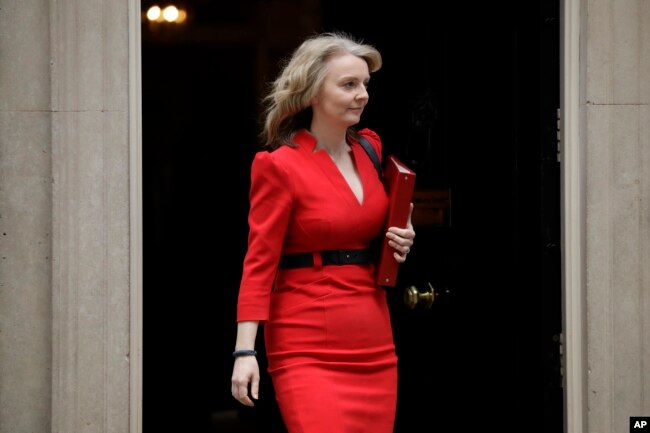Britain’s Parliament sought a way out of the country’s Brexit morass on Monday, voting on a series of measures that could soften or reverse the U.K.’s departure from the European Union — if a majority of lawmakers can agree, VOA news reports.
With just 12 days until the U.K. must come up with a new plan or crash out of the bloc in chaos, the House of Commons was considering four alternatives to Prime Minister Theresa May’s unpopular Brexit deal.
After May’s plan suffered three defeats in Parliament, and with Britain due to leave the EU on April 12, lawmakers seized temporary control of the parliamentary agenda to try to find a way forward.
Conservative lawmaker Ken Clarke, one of those behind Monday’s votes, said the Brexit process “has been a shambles.”
“Today we have got to start to bring that to an end,” he said.
Two of the four options — chosen by House of Commons Speaker John Bercow from eight submissions — aim to keep Britain in a close economic relationship with the bloc after Brexit. One seeks continued membership in the EU’s customs union, guaranteeing smooth and tariff-free trade in goods. The second goes further, calling for Britain to stay in the EU’s borderless single market for both goods and services.
Both ideas have strong support among opposition lawmakers and some pro-EU members of the governing Conservatives, who think they would ease the economic shock of Brexit. But many pro-Brexit politicians see them as halfway measures that fall short of true departure from the bloc.
A third proposal calls for any Brexit deal Britain strikes with the EU to be put to a public referendum. The fourth would let Britain cancel Brexit if it came within two days of crashing out of the bloc without a deal.
Monday’s votes in Parliament follow an earlier round last week in which none of the eight options on offer secured a majority. The customs union and second referendum proposals gained the most support.
May has ruled out all the ideas under consideration. But the divorce deal she negotiated with the EU has been rejected by Parliament three times, leaving Britain facing a no-deal Brexit that could cause turmoil for people and businesses on both sides of the Channel.
Defense Minister Tobias Ellwood urged fellow Conservative lawmakers to compromise to ensure an orderly Brexit.
“When you put your deal through three times and colleagues and others have not supported it, but you still want to honor the referendum result itself, you still want to get out of Europe, then something small has to give,” he said.
The April 12 deadline, imposed by the EU, gives May less than two weeks to bridge the hostile divide that separates those in her government who want to sever links with the EU and those who want to keep the ties that have bound Britain to the bloc for almost 50 years.
May, who is renowned for her dogged determination, could try to bring her Brexit agreement back for a fourth time later this week.
The government is considering holding a runoff vote between May’s deal and whatever gains the most support on Monday. May’s hope is that pro-Brexit opponents would back the deal if the only alternative was an even softer Brexit.
May’s spokesman, James Slack, Slack rejected speculation that the government could take drastic action, such as asking Queen Elizabeth II to suspend Parliament or getting her to refuse to sign legislation.
“We don’t have any intention of involving the queen in this process,” he said.
The impasse is raising expectations that lawmakers could try to trigger a snap election in the hope a new configuration in Parliament would break the Brexit logjam. But the Conservatives are worried that could hand power to the opposition Labour Party.
May has summoned ministers to a marathon Cabinet meeting on Tuesday to thrash out the options.
The range of choices, and lack of consensus, reflect a Parliament and a government deeply divided over how — and whether — to leave the EU.
Justice Secretary David Gauke said leaving the bloc without a deal was “not the responsible thing for a government to do.”
But Chief Secretary to the Treasury Liz Truss said it would be better than a soft Brexit.
“I don’t have any fear of no-deal,” she said.
The Brexit impasse has alarmed businesses, who say the uncertainty has deterred investment and undermined economic growth.
The chief executive of industrial manufacturer Siemens U.K. implored lawmakers to unite around a compromise deal, saying “Brexit is exhausting our business and wrecking the country’s tremendous reputation as an economic powerhouse.”
Juergen Maier urged lawmakers to keep Britain in a customs union with the EU, saying that would allow frictionless trade to continue. In a letter published by the Politico website, Maier said “where the U.K. used to be beacon for stability, we are now becoming a laughing stock.”
EU leaders have called a special summit on April 10 to consider any request from Britain for a delay to Brexit — or to make last-minute preparations for Britain’s departure without a deal two days later.
European Commission chief Jean-Claude Juncker said it was time for the British Parliament to spell out what it wanted on Brexit.
“A sphinx is an open book in direct comparison with the British Parliament,” he told the Saarland state legislature in Saarbruecken, Germany. “We must get the sphinx to talk now. Enough of the long silence.”


